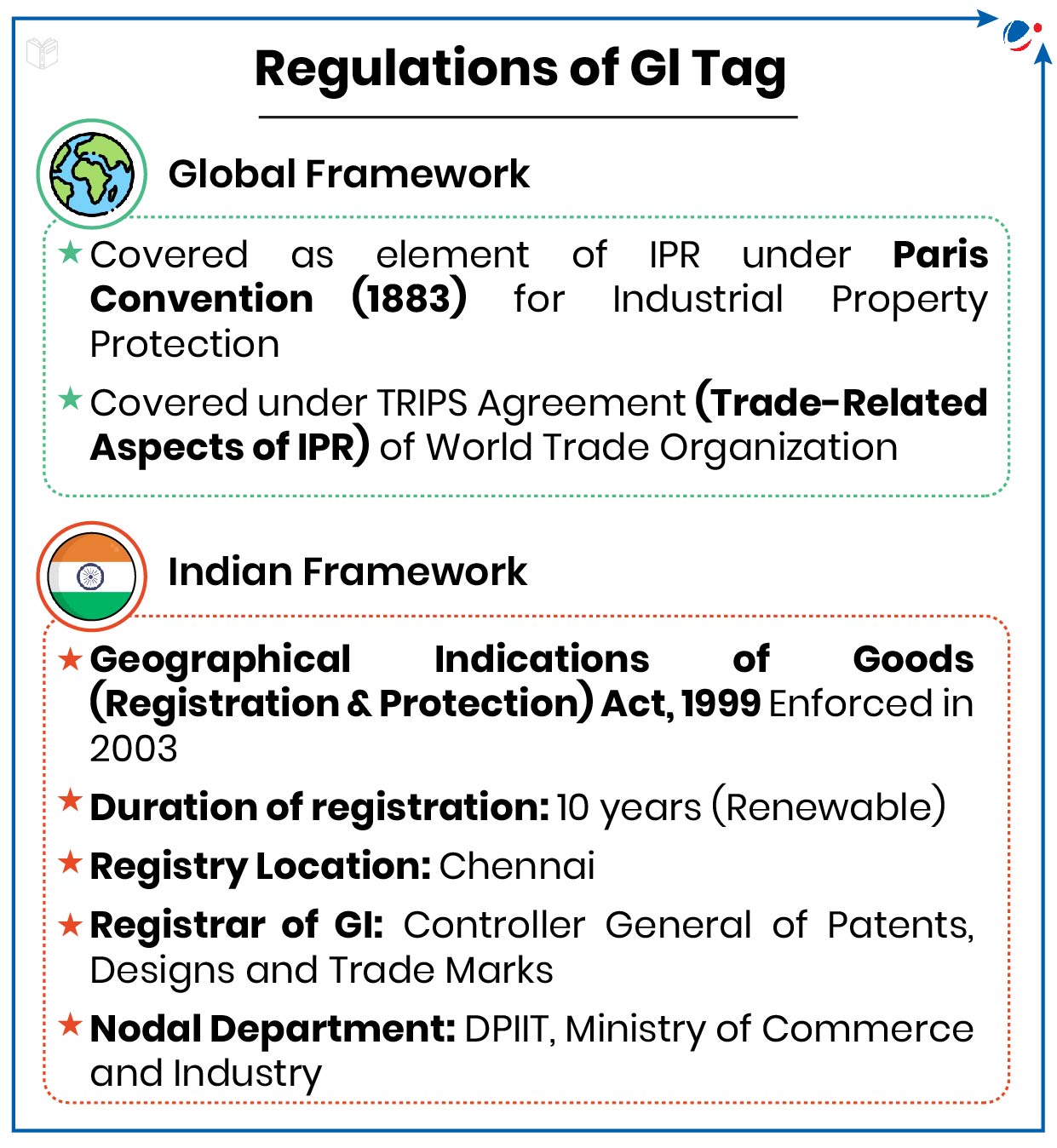
Why in the News?
Union Minister of Commerce & Industry set a target of reaching 10,000 Geographical Indication (GI) Tags by 2030 at GI Samagam in New Delhi.
About Geographical Indication (GI) Tag
- Definition: GI is a sign used on products that have a specific geographical origin and possess qualities or a reputation that are due to that origin.
- Application: GI are typically used for any agricultural, natural or manufactured goods or any goods of handicraft or of industry and includes food stuff.
- Protection: GI tagging provides legal protection to the producers preventing others from using the name of the product without permission.
Current status of GI Tags in India:
- The first GI tag was given to Darjeeling tea in 2004-05.
- The number of GI tags issued by the department till July 2024 stands at 605.
- Uttar Pradesh is the leading state in highest number of GI-tagged products followed by Tamil Nadu.
Important GI tag goods listed in 2024 are
State/UTs | Goods |
Uttar Pradesh |
|
Assam |
|
Andaman and Nicobar Islands |
|
Gujarat | Kutch Ajrakh |
Challenges of GI Tags in India
- Low Registration Rate: India lags behind nations like China (9,785 GIs), Germany (7,586), and Hungary (7,290) (World IP Indicators 2024).
- Regional Disparity: States like Karnataka, Tamil Nadu, and Uttar Pradesh have more GI registrations than others like Jharkhand and Tripura.
- GI Violations: Example: Banarasi silk is copied in Surat using power looms to create cheaper imitations.
- Lack of Awareness: Many rural producers are unaware of GI benefits. Example: Kagga Rice, a salt-tolerant variety from coastal regions of Karnataka, remains under-recognized.
- Geographical Disputes: Multiple states claim GIs for the same product. Example: Basmati rice faces ownership claims from different regions.
- Post-Registration Issues: Concerns about definition of a producer and the process for claiming authorised user status. Example: Farmers with GI-tagged products often lack knowledge of GI processes.
Initiatives to Strengthen GI Tags in India
|
Way Forward to Strengthen India's GI Tag System
- Increasing Awareness: Government policies should explicitly highlight 'GI Certified Goods' to help artisans recognize GI benefits.
- Strengthening Post-Registration Framework: Establish clear criteria for defining producers and maintaining authorised user status.
- Support for Poor Producers: Provide export subsidies to small producers and artisans to help them compete globally.
- Resolving State Disputes: States should collaborate on GI claims. Example: Kolhapuri Chappals received GI for both Karnataka and Maharashtra due to high demand.
- Conservation-Centric Approach: GI products like Kanniyakumari Matti banana and Kashmir saffron need adaptation strategies to counter climate change.



